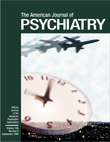Prediction of Neuropsychological Performance by Neurological Signs in Schizophrenia
Abstract
OBJECTIVE: The major purposes of this study were 1) to examine whether neurological signs predict cognitive performance in both schizophrenic patients and healthy subjects and 2) to determine the ability of neurological signs and neuropsychological tests to discriminate schizophrenic patients from healthy subjects. METHOD: Eighty-five patients with a DSM-III-R diagnosis of schizophrenia and 36 normal comparison subjects were included in the study. All subjects were administered a comprehensive neuropsychological test battery, and neurological signs were assessed with the Neurological Evaluation Scale. Stepwise regression analyses were used to predict neuropsychological test performance from the subscale scores on the Neurological Evaluation Scale. Forward stepwise linear discriminant function analyses were used to examine the discriminative ability of neurological subscale scores, neuropsychological test scores, and the two combined. RESULTS: Scores on the Neurological Evaluation Scale predicted the neuropsychological test performance of both patients and comparison subjects. The sensory integration subscale score was the most frequent predictor of neuropsychological test performance. In contrast, the “others” subscale, which includes frontal release signs, abnormalities in eye movements, and short-term memory, was the most highly discriminating subscale, correctly classifying 78.5% of the total study group. The best predictors from the neuropsychological battery (category fluency and Trail Making Test, part A, time test) correctly classified 81.8%. When both sets of variables were used, the Neurological Evaluation Scale “others” subscale entered the discriminant function first. CONCLUSIONS: Neurological signs are reliably related to measures of neuropsychological performance and also reliably discriminate between patients and healthy subjects. However, some neurological signs may be more sensitive to the presence of schizophrenia, while others may be more predictive of neuropsychological performance.



